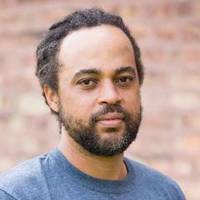Urban Planning - Online Degree Programs & Mentors
Urban planners work with public, private, and nonprofit agencies to help determine how urban systems should develop or function. This may include transit and transportation, water, economic development, affordable housing, or even land use. Most urban planners work for public agencies responsible for providing key services to community members, such as utility companies, city governments, or transit agencies.
They help agencies figure out the best way to provide services, constantly working with community members and local groups to determine what services to provide and how. This may include working on plans that determine what needs to be improved, maintained, or provided over time (often called a long-range or comprehensive plan) or working on projects that implement plans.
Other planners may work with local governments and private or nonprofit agencies to determine how to develop or redevelop a certain area. This is called current planning, meaning it’s looking into the immediate future.
Urban planners commonly work in an office setting, but will often travel to meet with community groups or other consultants. It is a highly collaborative field that commonly works across disciplines to develop concepts, plans, and projects. This means that urban planners also have to be skilled communicators, working to translate big ideas across disciplines that includes architects, engineers, urban designers, public outreach teams, economic development, and more. They also commonly hold or attend public hearings, meetings, or workshops held at night or on weekends so community members can participate.
Urban planning has changed a lot since its inception in the late 1800s. Previously, urban planners administered zoning, which defines what can be built in different parts of a city or town. They also worked closely with engineers and architects to develop requirements, also known as zoning code, that controlled what community members could (or couldn’t) build and where they could put it.
Urban planning was also a powerful tool for enforcing state-sponsored segregation in the United States, which is still active today. The original purpose of zoning code was to enforce redlining, a practice conducted by the Federal Housing Administration’s Home Owners Loan Corporation (HOLC) that assigned grades to neighborhoods based on the presence of people of color. Neighborhoods with lower grades were systematically denied home loans and were effectively prevented from homeownership unless attained through often predatory means.
While urban planners are now taught the history of the profession and work to undo this racist legacy, the profession remains overwhelmingly white and male. As planning is highly collaborative and has enormous impacts on the communities they serve, it is critical for urban planners to represent the communities they serve.
Influential thinkers such as Jane Jacobs, who fought for the preservation of Greenwich Village in New York City, and Grace Lee Boggs, who worked for tenants rights in Chicago and majorly contributed to the neighborhood activism movement, have played a huge role in how planning shifted to a more collaborative approach. Previously, planning was a “technocratic” practice, which meant the government relied on planners to function as experts with little input from the public. However, the work of neighborhood activists and other figures helped shift planners to a collaborative approach that works closely with community members to determine how systems should look and function.
While many urban planners hold a master’s degree in urban planning, it is not required to work as a planner. Many hold degrees in geography, architecture, art, environmental studies, architecture, ecology, or even folklore. As urban planners work on so many facets of the systems the public use each and everyday, there is a wide cross-section of skills that help urban planners succeed in their day-to-day jobs.
That said, there are benefits to getting a bachelor’s or master’s degree in urban planning. Prospective planners should choose a planning program accredited by the Planning Accreditation Board, which works closely with the American Planning Association, the primary professional organization for planners.
Attending an accredited program also provides a fast-track to getting certified through the American Institute of Certified Planners (AICP). This certification means that a planner has met all of the professional requirements and has the experience to conduct urban planning in an equitable and ethical way. While not required to work as a planner, the AICP credential helps urban planners stand out in the job market and acts as a valuable pre-screening for employers seeking qualified candidates.
Read on to learn more about fast facts, mentors, educational programs, and DIY resources to explore urban planning.
Fast Facts: Why are Urban Planning Skills Important?
- Interdisciplinary Thinking – Urban planners are strong interdisciplinary thinkers, serving as a connector to help bridge many different perspectives.
- Bringing Together Technology and Design – With an eye towards the future, urban planners are skilled at integrated design thinking, or spatial awareness, and technology, which provides a means to communicate and analyze information.
- Equity-Focused Approach – Urban planners lead with equity, focused on working with communities to improve and maintain great places, programs, and processes that meet their needs
Mentors: Urban Planning Gurus to Know

Gil Penalosa is the founder of 8-80 Cities, an international non-profit based out of Toronto that has worked with over 350 communities across six continents to help improve parks, streets, and places for all community members. Their guiding principle is that cities and towns should be accessible to those as young as eight and those over the age of 80. In other words, equitable places that people can play, live in, and work in without relying on a car or feeling unsafe. They also work with public leaders to support efforts around public health, transportation, parks and recreation, and urban design.
Penalosa also provides consulting and thought leadership to communities around the world and serves as a senior advisor to the Vision Zero Network, Children & Nature Network, and America Walks. Ranked as one of Planetizen’s Top 100 Most Influential Urbanists, Penalosa has over 30 years of experience working as an urban planner. While working for the local government in Bogotá, Columbia, he led the design and construction of over 200 parks and started the “ciclovia” movement. This open streets movement closes down streets in Bogotá every Sunday and has almost two million participants. It also sparked an international movement around equitable open streets and has spread to cities around the world.
He holds a master’s in business administration (MBA) from the University of California, Los Angeles and a doctorate honoris causa (honorary doctorate) from the school of urban planning at the Swedish University of Agricultural Sciences.

Emmanuel Pratt is the internationally-recognized executive director of the Sweet Water Foundation, which uses urban agriculture, art, and education to transform vacant or underused places into community spaces that produce “engaged youth, art, locally-grown food, and affordable housing”. This approach is known as regenerative neighborhood development, “a creative and regenerative social justice method, that creates safe and inspiring spaces and curates healthy, intergenerational communities that transform the ecology of so-called ‘blighted’ neighborhoods” (Sweet Water Foundation).
Based in south side Chicago, the Sweet Water Foundation has transformed multiple city blocks through installations and projects, including an urban farm, solar-powered art galleries and greenhouses made out of shipping containers, performance and gathering spaces, and a place for cooking and design demonstrations.
Pratt is a 2019 MacArthur Fellow, a Loeb Fellow at the Harvard University Graduate School of Design, and a visiting lecturer in the environmental and urban studies program at the University of Chicago. He also served as the director of aquaponics at Chicago State University and was the Charles Moore Visiting Professor at the Taubman College of Architecture and Urban Planning at the University of Michigan. He holds a bachelor’s in architecture from Cornell University and a master’s of science in architecture and urban design from Columbia University.
Online Urban Planning Programs
There is only one urban planning program that is fully online and accredited by the Planning Accreditation Board (PAB). Many urban planning programs require students to attend in-person classroom experiences, as well as have substantial site visit requirements and collaboration with community and local partners. This provides students the opportunity to get real-world experience, as well as learn from professionals already working in the field. It also provides the opportunity to have a “client” and get experience presenting information and getting client and public feedback on ideas. Last, it provides students with first person experience on how to run a public meeting and hold formal hearings.
Online programs not accredited by PAB still provide a pathway to AICP certification. However, those attending non-accredited programs will need to have four years of post-graduate work experience to apply for AICP certification, as opposed to only two years.
The University of Florida offers a 52-credit fully online master of urban and regional planning (MURP) degree with concentrations in geographic information systems (GIS) and sustainability. This highly flexible and technical program includes coursework in site design methodology, urban land economics, quantitative data analysis for planners, urban spatial analysis, web mapping and visualization, land use planning law, and planning theory and history. In lieu of a thesis, students complete a hands-on research project that provides them the opportunity to dive deeper into a specific area of interest.
Students applying to this program should have an undergraduate degree with a 3.0 GPA and three letters of recommendation. They should also submit a resume and personal statement that describes how their personal goals relate to the program. Note that applicants to this program are not required to submit GRE scores.
- Location: Gainesville, Florida
- Estimated Tuition: $865 per-credit hour (not including course materials or registration fees)
- Accreditation: Planning Accreditation Board (PAB)
Arizona State University offers a fully online bachelor’s of science in urban planning for undergraduates who want to get a head start on their planning careers. As few four-year universities provide undergraduate degrees in planning, a bachelor’s degree in urban planning allows students to get started in their planning careers ahead of their peers. This program is 120-credit hours and provides a comprehensive understanding of planning from a theoretical and practical perspective.
Coursework includes an introduction to urban planning, sustainable cities, geographic information systems, planning methods, and statistics for geography and planning.
Students applying to this program should have a high school diploma or GED. They must have been within the top 25 percent of their class, have a 3.0 GPA or higher, an ACT score of 24, or an SAT reasoning score of 1180.
- Location: Phoenix, Arizona
- Estimated Tuition: $12,928 per year (not including course materials or registration fees)
- Accreditation: Higher Learning Commission (HLC)
Portland State University
Portland State University offers a fully online (or hybrid) bachelor of science (BS) or bachelor of arts (BA) in urban and public affairs for undergraduates looking for a community-focused planning degree. This degree provides coursework in public policy, community development, criminal justice, public administration, economic development,
Coursework includes an introduction to urban planning, sustainable cities, geographic information systems, planning methods, and statistics for geography and planning.
Students applying to this program should have a high school diploma or GED. They must have been within the top 25 percent of their class, have a 3.0 GPA or higher, an ACT score of 24, or an SAT reasoning score of 1180.
- Location: Phoenix, Arizona
- Estimated Tuition: $12,928 per year (not including course materials or registration fees)
- Accreditation: Higher Learning Commission (HLC)
DIY Skill-Building in Urban Planning
Looking for free or low-cost ways to build your urban planning knowledge? Want to stay up-to-date on trends and skills? Urban planning is a frequently changing and evolving field. Check out the platforms below for opportunities to build your skills, DIY-style, and keep track of new developments and things to learn!
Plantizen provides video courses for planners, students, community activists, and interested professionals looking to deepen their knowledge of planning and stay up-to-date on developments. Courses can be used to meet AICP continuing education requirements and are delivered by nationally-recognized planners, policy makers, academics, and thought leaders.
In addition to providing a wide range of topics on everything from parking to rural economic development, Planetizen also provides “tracks” for those who want to take a structured approach to learning. These tracks include:
- Data Visualization for Planners: How to use Tableau
- Learning Tactical Urbanism
- GIS Fundamentals
- Using Census.Gov
- Planning Ethics
- And more!
While some courses are offered for free, Planetizen uses a low-cost subscription model to deliver content. Subscriptions are available for as little as $25.95 a month or $199 per-year.
American Planning Association: APA Learn
The American Planning Association (APA) provides APA Learn, a service that provides education resources, thought leadership, and case studies for anyone to access. These resources range in price from free to $15 per course for APA members and $30 per course for non-members.
Topics range from disaster recovery to affordable housing and economic development, featuring speakers from key public agencies, academic, private agencies, and more. These courses can also be used to help AICP members meet continuing education requirements.
Looking to learn or brush up on your geographic information systems (GIS) skills? GIS is a tool used to gather, manage, and analyze spatial data. It is also used to measure community outreach, real estate economics, zoning capacity, and more.
ESRI, the company that makes ArcGIS, provides free tutorials on how to use GIS for different scenarios. Some of their lessons include how to analyze medical facilities for expansion, use GIS for public transit planning, estimate materials for a sandbag well, build an earthquake magnitude map, and even how to construct a realistic 3D view of a scene.


